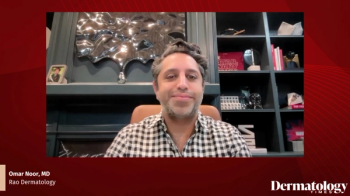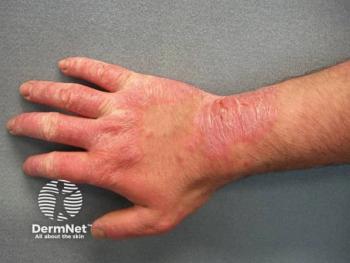
- Dermatology Times, April 2025 (Vol. 46. No. 04)
- Volume 46
- Issue 04
Dermatology Times April 2025 Print Recap
Key Takeaways
- Dermatologists must consider systemic causes of facial hyperpigmentation, as they significantly impact patients' quality of life and may indicate underlying diseases.
- Rosacea research has advanced, improving management strategies, but further genetic phenotyping is needed to fully understand the disease.
Learn more about the in-depth topics covered in the April 2025 print issue of Dermatology Times.
The April issue of Dermatology Times includes a collection of thought-provoking articles and topics ranging from . Be sure to read the highlights from the issue below. Also, don’t miss a moment of Dermatology Times by signing up for our
Beyond Melasma: Systemic Causes of Facial Hyperpigmentation
Due to the frequent involvement of pigmentary disorders of the face, dermatologists must be aware of their significant impact on patients’ quality of life. As these conditions remain one of the most common reasons to seek dermatologic care, concerns of physical appearance, social well-being, and financial stability are top-of-mind for patients.
It is crucial for dermatology providers to be aware of the potential systemic causes of facial hyperpigmentation. When encountering a patient with facial hyperpigmentation, clinicians must look beyond common conditions like melasma and postinflammatory hyperpigmentation, as an undiagnosed systemic disease may be contributing to the presentation.
Rosacea: Progress, Challenges, and the Road Ahead
“We haven’t even gotten close to the kind of genetic phenotyping we see in psoriasis and atopic dermatitis. There is still a lot to learn,” said James Del Rosso, DO, in a recent interview with Dermatology Times on the state of rosacea research. While the exact cause of rosacea remains elusive, advancements in research have significantly improved our understanding of the disease, leading to better management strategies. Experts such as Del Rosso and Zoe Diana Draelos, MD, have contributed extensively to this field, offering insights into emerging therapies, treatment gaps, and the evolving perspective on rosacea pathophysiology.
How to Best Support Women With Menopausal Acne
Although perimenopausal and menopausal acne are becoming more common in dermatology clinics each year, it remains an underexplored area of research. Acne in middle-aged to older adult years affects 12% to 22% of women compared with 3% of men, and it is reported to have a significantly higher negative effect on women’s quality of life compared with men. Furthermore, acne in patients with darker pigmented skin tends to be more detrimental due to the darker postinflammatory scarring and keloids left behind from the deep inflammation caused by menopausal acne. As opposed to adolescent acne that tends to flare on the cheeks and forehead, menopausal acne typically flares on the chin, mandible, and around the mouth.
Perimenopausal and menopausal acne are reported to cause more emotional distress and anguish than adolescent acne flares, although not quite as common compared with adolescents. This could be caused by the increased expectation and acceptance of adolescent acne during that specific phase of life compared with a middle-aged woman experiencing perimenopausal changes. This emphasizes the importance of understanding patient concerns and offering effective treatment plans.
Practice What You Preach: A Clinician's Guide to Chemical Peels
Leonid Rogozov, MD, Barry Marshall, MBBS, Hershel Dobkin, MD, FAAD -- What do these giants of medical history and innovation all have in common? They were all bold enough to forego an IRB approval and take medical progress into their own hands!
I, Hershel Dobkin, performed the infamous Jessner’s Solution and Trichloroacetic Acid 35% “medium” depth chemical peel on myself. Why did I do it you may ask? In a nutshell, I wanted to have cool before, during, and after pictures to show patients interested in the procedure.
Articles in this issue
Newsletter
Like what you’re reading? Subscribe to Dermatology Times for weekly updates on therapies, innovations, and real-world practice tips.



















